Did you know that over 60% of marlin world records have ties to the Baja Peninsula, with October seeing more marlin caught per day than almost any month worldwide? Welcome to Cabo’s October Triumph, where legendary anglers and first-timers alike unlock the untold secrets of marlin fishing. In this comprehensive guide, we’ll reveal proven expert tactics, uncover the differences between key marlin species, and help you ride the October wave to success—making sure you’re ready to join the ranks of record-holders, tournament champions, and lifelong thrill-seekers who call Cabo San Lucas the deep sea fishing capital of the world.
Unlocking the Magic of Marlin Fishing: October in Cabo by the Numbers
October is the adrenaline-fueled peak of the marlin fishing season in Cabo San Lucas. During this time, the convergence of warm Pacific Ocean currents and abundant bait fish creates a feast for giant predators. It's not uncommon for seasoned crews to report up to 10 marlin strikes in a single outing—a statistic unmatched almost anywhere else, including storied waters off San Diego or even the Indian Ocean’s famed bluewater domains. Anglers from the United States flood the Cabo San marina, knowing that October is when the scales tilt in favor of trophy catches and world record possibilities.
Tournament fever takes hold as legendary billfish tournaments, like the Black & Blue and Bisbee’s, lure hundreds of teams from around the globe. Every aspect of these events—especially the record-breaking blue marlin weighed at the docks—underscores Cabo’s reputation as the world’s premier deep sea sportfishing hub. This month brings together international attention, explosive feeding activity, and a rare alignment of ocean conditions, setting the stage for unforgettable adventure and fierce competition. For those seeking their personal best or an entry in the International Game Fish Association record books, October is an invitation worth accepting.
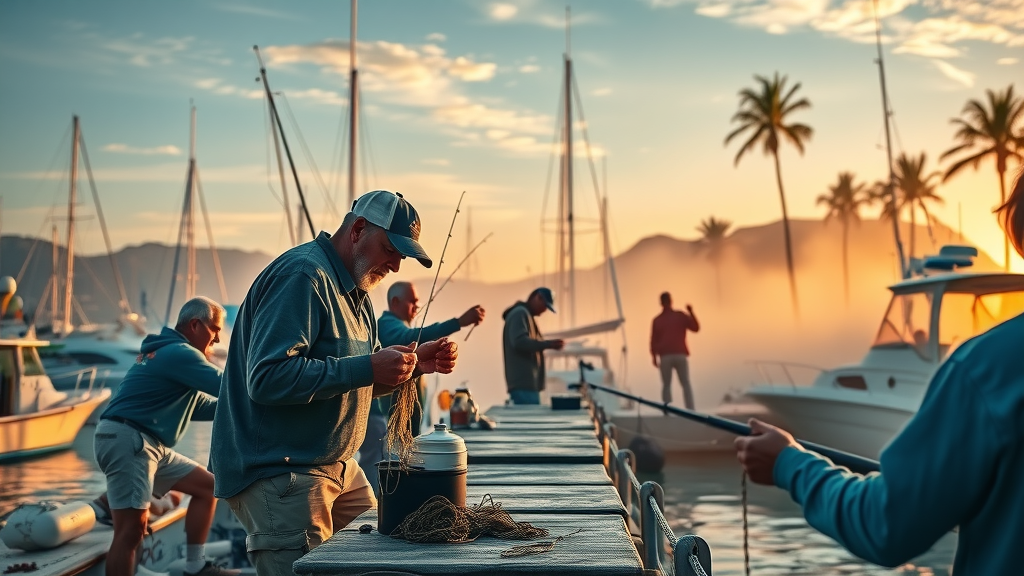
"Marlin fishing in October is not just a sport in Cabo—it’s a legendary pursuit yielding global records and unforgettable memories."
What You'll Learn: Expert Marlin Fishing Tactics and October Advantages
- Why October is prime time for marlin fishing in Cabo
- Differences between blue marlin, striped marlin, and white marlin
- Essential marlin fishing gear: live bait vs artificial lure
- The role of deep sea conditions in successful marlin fishing
- How to target world-record marlin species with expert techniques
Marlin Species in Cabo: Blue, Striped, and White Marlin Fishing Insight
Distinguishing between the blue marlin, striped marlin, and white marlin is fundamental for success in Cabo’s deep blue waters. Each species presents unique visual cues, seasonal patterns, and behavioral quirks to master. Their migratory movements and feeding behaviors are shaped by water temperature, bait concentrations, and oceanographic features characteristic of late Pacific autumn. If you’re fishing for marlin in October, knowing the best techniques for each type will dramatically boost your strike rate—whether you’re in it for a fun day trip or aiming for the ultimate trophy.
Blue Marlin: Identifying, Targeting, and Fishing for Giants
Blue marlin are the undisputed titans of marlin fishing in Cabo, routinely tipping the scales at 500 pounds or more, with the largest blue marlin caught here exceeding the 1,000-pound mark. Their electric cobalt coloration, sickle-shaped dorsal fin, and elongated bill distinguish them from all other marlin species—making them the stars of any angler’s day. October provides the optimal conditions: blue marlin migrate into the region’s deep offshore banks, drawn by massive schools of bait fish such as mackerel and bonito. Hooking a blue marlin in these waters is an adrenaline-charged challenge, mixing patience, precision, and raw power.
To increase your chances with blue marlin, expert captains recommend trolling live bait—such as skipjack or trolled bonito—combined with robust marlin lures with reflective flash. Proper tackle for blue marlin should include heavy-class reels, 100+ lb test lines, and chemically sharpened hooks. Mastering the read of surface currents and temperature changes can put you directly over productive bluewater. Set up your day trip for early morning departures; these giants often strike hardest as the sun crests over the Pacific Ocean’s horizon, when the deep sea is alive with prey and possibility.
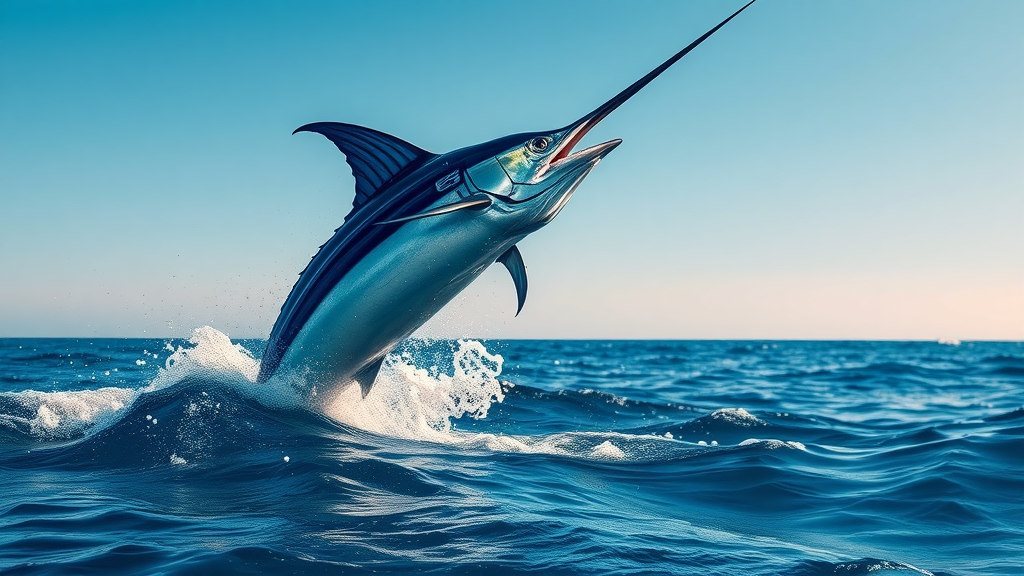
Striped Marlin: Seasonal Patterns and Best Approaches
The striped marlin is Cabo’s signature game fish, famous for its aerial acrobatics and abundance throughout October. These agile hunters are typically more prevalent than blue marlin, making them a staple of local sportfishing tournaments and the heart of many anglers’ Cabo memories. A mature striped marlin averages between 150 and 250 pounds, featuring distinct slate-blue stripes and a slender frame. In October, the striped marlin migrate in waves from the north, zeroing in on concentrations of sardine, mackerel, and squid close to the surface along the Pacific drop-offs.
Expert guides often suggest sight-casting artificial lures or rigged natural bait to pursuing packs of “stripers.” The key is swift adaptation: striped marlin can be aggressive or finicky, depending on water clarity and baitfish densities. Trolling patterns that mimic wounded bait combined with lightweight tackle maximize strike rates and bring out their legendary fighting spirit. Even if you’re new to marlin fishing, the chance of landing multiple striped marlin in a single day makes October in Cabo a dream scenario unmatched almost anywhere else in the Atlantic or Indian Ocean.
White Marlin: Locating Cabo’s Elusive Game Fish
The white marlin is the rare gem of Cabo’s marlin trio and remains one of the most elusive targets for determined anglers. Generally smaller, averaging 60 to 90 pounds, they can be quickly recognized by their pointed snout, rounded dorsal fin, and silvery-white profile. White marlin are found in offshore rips and thermoclines where concentrations of smaller bait fish migrate through. October is one of the very few times you might encounter white marlin in Cabo, as balmy waters and shifting currents briefly create perfect conditions for their appearance.
Because their feeding behavior is more subtle than the blue or striped marlin, patience and a sharp eye are essential. Live bait—especially smaller mackerel or sardines—works best, but many sharp captains will also have a variety of artificial lures ready to quickly change presentation. A light-tackle approach, combined with precise drift positioning, can quickly turn a casual day trip into a bucket-list triumph—especially when competing in prestigious marlin tournaments or striving for an IGFA-recognized catch.
Why October is Cabo's Best Time for Marlin Fishing
October is when all the elements necessary for extraordinary marlin fishing collide in Cabo San Lucas. First, sea surface temperatures between 78-82°F create a habitat akin to a marlin paradise, while massive schools of baitfish surge along major underwater canyons just offshore. These conditions drive epic marlin migrations—blue, striped, and even white marlin patrol this large area in search of their next meal.
This is also when world-famous tournaments like the Bisbee’s Black & Blue and Los Cabos Billfish draw both international pros and ambitious first-timers, all vying to set the next world record or claim a share of tens of millions in prize money. October’s unique combination of weather, oceanic currents, and rich bait zones ensure marlin activity reaches its absolute peak, attracting anglers from the United States, Mexico, and beyond. For those looking to combine competitive sportfishing with the beauty of Cabo’s October light, nothing compares.
- Water temperature and baitfish concentrations
- Marlin migration and feeding activity peaks
- Sportfishing tournaments and international attention
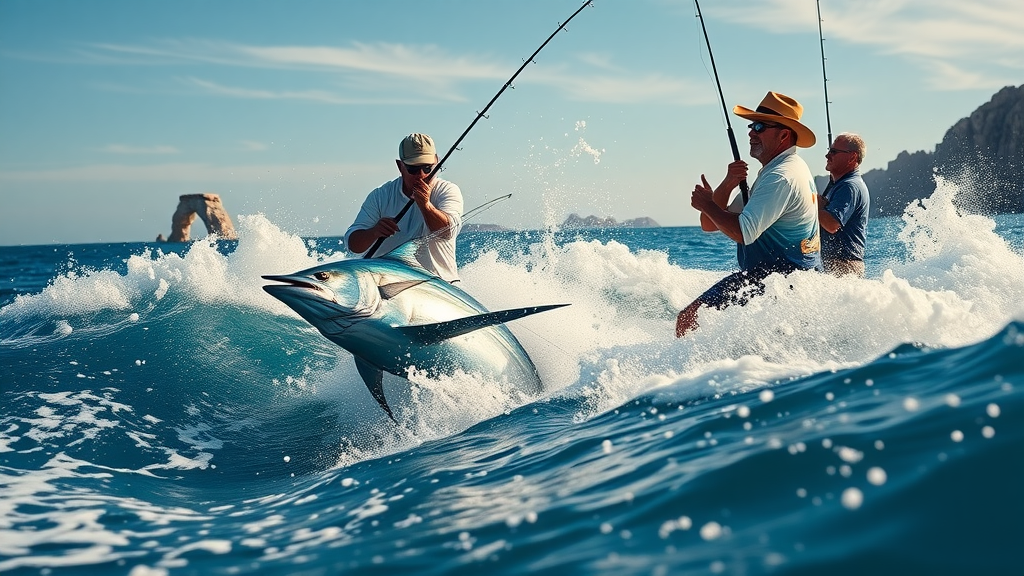
Live Bait vs Artificial Lure: Choosing the Right Setup for Marlin Fishing
The debate between live bait and artificial lures is as old as sportfishing itself, with each approach offering unique advantages for marlin fishing in Cabo. Live bait mimics the natural behavior and scent profile of marlin prey—think mackerel, sardines, and bonito—making it irresistible to discerning predators, especially when the bite gets slow. However, managing live bait demands specialized tanks, frequent monitoring, and a crew skilled in delicate rigging. On the other hand, artificial lures deliver speed, versatility, and impressive coverage, allowing multiple lines to be trolled efficiently across a large area for all marlin species.
Pro captains will often start with a spread of artificial lures in the early morning, switching to live bait when visual bird activity or sonar marks signal marlin moving in tightly on feeding frenzies. The most successful crews stay adaptable, observing sea surface conditions and cycling between gear types for the highest hook-up ratios. Whether you lean towards natural bait or colorful marlin lures, making these strategic choices in October can be the difference between a memorable day trip and a life-changing catch.
| Gear Type | Pros | Cons | Best Targeted Species |
|---|---|---|---|
| Live Bait | Natural presentation, attractive scent | Requires management | Blue marlin, striped marlin |
| Artificial Lures | Easy to deploy, good coverage | Less natural scent | All marlin species |
Deep Sea Essentials: Gear, Tactics, and Safety for Marlin Fishing
Cabo’s deep sea domain is a proving ground where well-prepared anglers separate themselves from the rest. The right gear is crucial: rugged trolling rods, precision-tuned reels, and a balanced mix of live bait rigs and marlin lures ready for rapid deployment. Think of your boat’s deck as a “command center”—everything organized for efficiency, with safety equipment always in arm’s reach. Attention to detail here isn’t just about landing the fish; it’s about finishing your marlin day trip safely while protecting both crew and catch.
Tactics shift each day. On some mornings, marlin hug closer to deep sea canyons, while on others, they stalk baitfish over shallower banks. Mastering sonar, GPS, and weather trackers—and trusting your captain’s real-time interpretation—can maximize productive passes and minimize wasted effort. For those aspiring to the upper echelons of marlin fishing, understanding every aspect of deep sea navigation, gear optimization, and safety protocol is what turns solid outings into iconic ones.
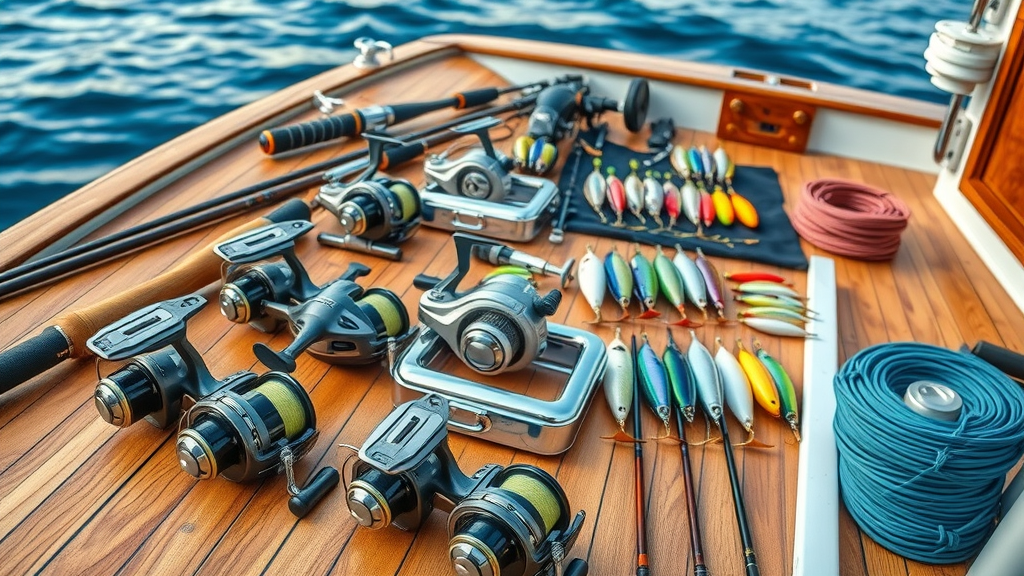
The Ultimate Marlin Fishing Gear Checklist
Preparation is everything in marlin fishing. Here’s a checklist used by top Cabo sportfishing captains:
- 30-130 lb class rods and reels (lever drag preferred)
- Braided and monofilament main lines (100-200 lb test)
- Circle hooks and high-strength swivels for ethical release
- Assortment of trolling lures: bright, shadow, and natural colors
- Specialized live bait tanks and aerator systems
- Heavy-duty fighting harnesses and rod holders
- Polarized sunglasses for fish-spotting
- Two types of gaffs—short and long—for safe handling
Deep Sea Safety: Best Practices for Cabo’s October Waters
Safety is the backbone of every successful marlin expedition, especially when tackling October’s sometimes unpredictable Pacific Ocean off Cabo San Lucas. Always check weather and sea-state forecasts before leaving port. Install up-to-date GPS and VHF radios for communication, and keep all required Coast Guard and tournament-mandated equipment on board. Instruct your crew on emergency protocols, including life jacket use, man-overboard procedures, and marlin de-hooking.
Prioritize quick, ethical releases—especially when targeting trophy game fish during high-stakes events. Avoid bringing marlin entirely out of the water for photos, as recent research and sportfishing guidelines highlight the importance of safe catch-and-release for preserving future stocks. By preparing thoroughly and respecting both the sea and its giants, you ensure every marlin fishing adventure is not only memorable, but legendary.
World Record Dreams: Chasing the Biggest Marlin in Cabo
Cabo San Lucas has seen more world record marlin catches than nearly any other deep sea fishing destination. Standouts include blues over 1,000 pounds and jaw-dropping striped marlin landed during fierce October tournaments. Achieving these feats requires more than luck—it’s about preparation, smart tactics, and unwavering respect for local regulations and sustainable sportfishing.
Set your sights high with proven big-fish techniques: target drop-offs at sunrise, rig for maximum strength, and always be ready for extended fights—up to 4 hours or more for the biggest blue marlin. Use certified weigh scales for potential records and document every step with photos, videos, and witness statements per International Game Fish Association rules. Remember, conservation is paramount: new records gain prestige only when caught using ethical, sustainable practices.
- Notable records set in Cabo
- Preparation and tactics for trophy catches
- Conservation and ethical sportfishing practices
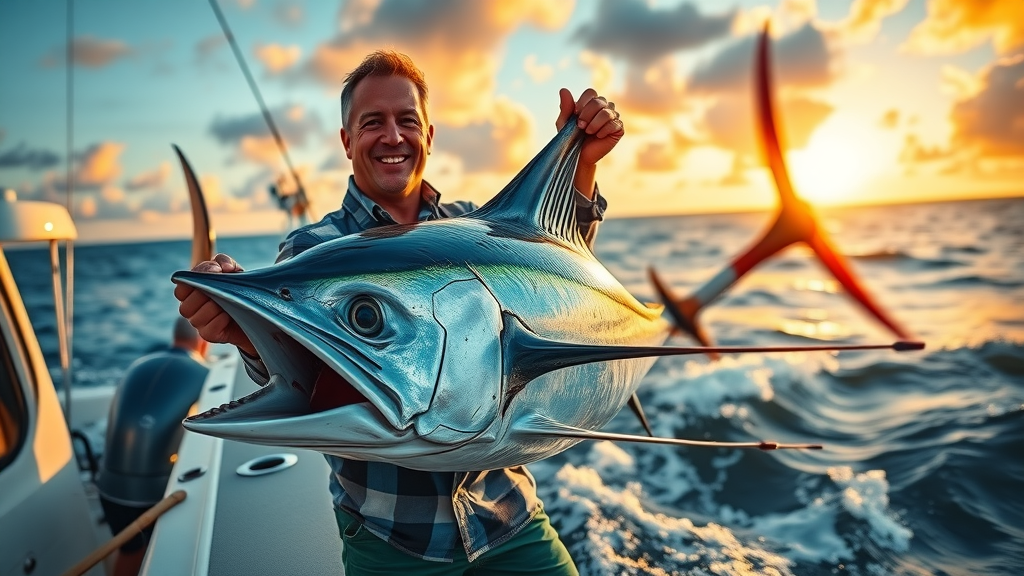
Marlin Fishing FAQs: Expert Answers
Why is it illegal to catch a blue marlin?
Catching a blue marlin is not universally illegal; however, strict regulations exist in many jurisdictions (including near Cabo) to protect these world-class game fish. Regulations focus on size limits, catch quotas, and mandatory release in tournaments to maintain sustainable populations and ensure only a limited percentage are harvested commercially. By following these laws, anglers contribute to the long-term health of Pacific and Atlantic marlin populations, aligning with International Game Fish Association and local management bodies’ guidelines.
How much is a 500 pound marlin?
In commercial terms, a 500-pound marlin is less valuable as food than its trophy status suggests. The real worth of a marlin this size comes from the unforgettable sportfishing experience and potential world record bragging rights. Most recreational and tournament-caught marlin in Cabo are released alive. While prices can vary on the open seafood market internationally (such as in Japan), marlin fishing in Cabo is focused on the thrill, the conservation, and the fierce competition—making the catch priceless for most anglers.
Why are marlins so hard to catch?
Marlin are considered the apex challenge for deep sea anglers because of their immense speed, power, and unpredictable tactics. Their battles often include spectacular leaps, head-shaking runs, and attempts to spit the hook, demanding skillful rodwork and sharp crew coordination. Their migratory nature and reliance on specific bait fish concentrations add to the challenge, meaning timing and knowledge are fundamental to consistent marlin fishing success.
Where is the best place to catch marlin?
Cabo San Lucas is frequently ranked as the best place to catch marlin, thanks to its unique combination of productive ocean canyons, upwelling nutrients, and a world-class charter fleet. Other renowned marlin hotspots include North Carolina’s Outer Banks, the Indian Ocean coastlines, and select sites in the Atlantic Ocean, such as the Azores. However, few places match Cabo for its reliability, variety of marlin species, and October’s record-setting adrenaline.
Tips & Secrets from Cabo’s Elite Marlin Fishing Captains
- Read ocean currents and surface bait activity: Look for bird flocks diving on bait fish—marlin are likely nearby.
- Master trolling patterns for live bait and artificial lures: Experiment with mixed spreads and change lure colors to match daily conditions.
- Optimize tackle for quick, ethical releases: Use circle hooks and de-hooking tools to maximize marlin survival after catch-and-release.
"The thrill of deep sea marlin fishing in Cabo’s October light is an adventure unlike any other—where every strike might become legend."
Key Takeaways: Mastering Marlin Fishing During Cabo’s October Triumph
- October offers peak marlin activity in Cabo San Lucas
- Understanding marlin species is key to consistent success
- Gear selection (live bait vs artificial lure) impacts catch rates
- Respect regulations and best practices for sustainable sportfishing
Plan Your Marlin Fishing Adventure: Book with Cabo's Top Vendors
Whether you dream of setting a world record, out-fishing your rivals in a marlin tournament, or simply savoring the deep sea adventure of a lifetime, Cabo’s best charter vendors make the difference. Look for reputable captains known for sustainable practices, expert knowledge of local marlin species, and top-of-the-line tackle. For a curated experience—and the most reliable vacation packages—explore trusted partners at CuratedCaboMX.com.
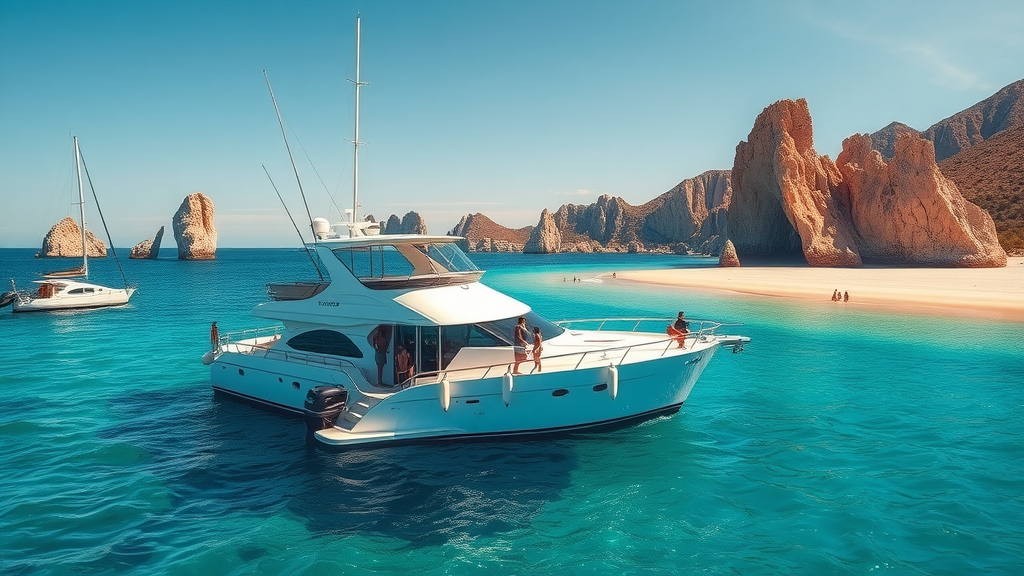
Conclusion: Cabo’s October Marlin Fishing—Legends Await
Cabo’s October marlin fishing combines unmatched thrill, legendary records, and the promise of lifelong memories. The legends are real—will you join them?
Sources
For those eager to expand their knowledge and plan the ultimate marlin fishing adventure, the resource Curated Cabo MX provides expert advice, trusted charter recommendations, and valuable local insights. This site brings together curated fishing packages and vendor information, ensuring your trip to Cabo is both memorable and successful. If you’re serious about marlin fishing, this resource will give you the expert edge and planning support necessary for a legendary experience.
 Add Row
Add Row  Add Element
Add Element 




Write A Comment